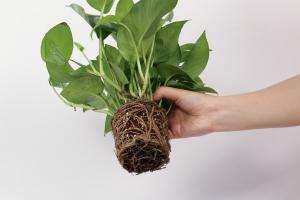How to Take Good Plant Photos
Taking great photographs of plants is an art that requires skill, patience and an understanding of plants. Whether you use a camera or a smartphone, this article will help you learn how to capture stunning images of plants for your social media or personal collection.
Choose a Good Angle
A great photograph starts with a strong angle. A low angle can make a small plant look huge, while a high angle makes it appear more diminutive. Try different angles, such as top-down shots, close-ups or a perspective that shows a plant in its natural surroundings. Take some test shots and see which works best for the type of plant and message you want to convey.
Use Natural Light Whenever Possible
The best light is natural, so when possible, take your pictures outdoors, where you can use the sun to your advantage. Try shooting during “golden hour,” the hour just after sunrise and before sunset, to capture softer, more flattering light. Avoid taking pictures in harsh midday sun, which will create shadows and may overexpose your subject.
Pay Attention to Composition
The right composition can make or break a picture. Consider the rule of thirds, which divides the image into a grid and places the subject of the photo off-center, which makes it more visually interesting. Include natural elements in your photo, such as leaves, flowers, or even stones, to add interest and dimension. Keep in mind that composition does not always have to fit perfection; a slightly off-kilter photo can be whimsical and fun.
Get Close and Personal
Don't be afraid to get up close and personal with your subject. Take extreme close-ups of leaves, stems, flowers or even the dirt to draw attention to the textures and inherent patterns found in plants. Play around with different settings on your camera, such as depth of field, to get different effects.
Showcase the Details
Showcasing the details of a plant can be just as stunning as a full-body photo. If you have a macro lens, use it to capture minute details such as the intricate patterns of a flower's center or the textures of a leaf. Even without a macro lens, try to zoom in close to the subject to really bring out the details.
Experiment with Perspective
Experimenting with different perspectives is key to creating beautiful and unique plant photos. Try shooting the same plant from various angles to get a feel for what works best. Take shots from above or below, capture the plant at eye level, or try a worm's eye view. The more you experiment, the more you will discover what works best for each type of plant.
Edit Your Photos
Editing your plant photos is an important part of the photography process. Whether you use a free app or a paid software, editing can help enhance your photos, correct any issues with lighting or colors, and even add artistic effects. Do not go overboard with the editing, though; keep a natural feel to your photos.
Taking great plant photos requires patience, skill, and an eye for detail, but with some practice and experimentation, anyone can capture stunning images of their favorite plants. Remember, the joy is in the process; have fun and enjoy the beauty of the plants you are photographing.

 how many times do yo...
how many times do yo... how many planted tre...
how many planted tre... how many pine trees ...
how many pine trees ... how many pecan trees...
how many pecan trees... how many plants comp...
how many plants comp... how many plants can ...
how many plants can ... how many plants and ...
how many plants and ... how many pepper plan...
how many pepper plan...




























